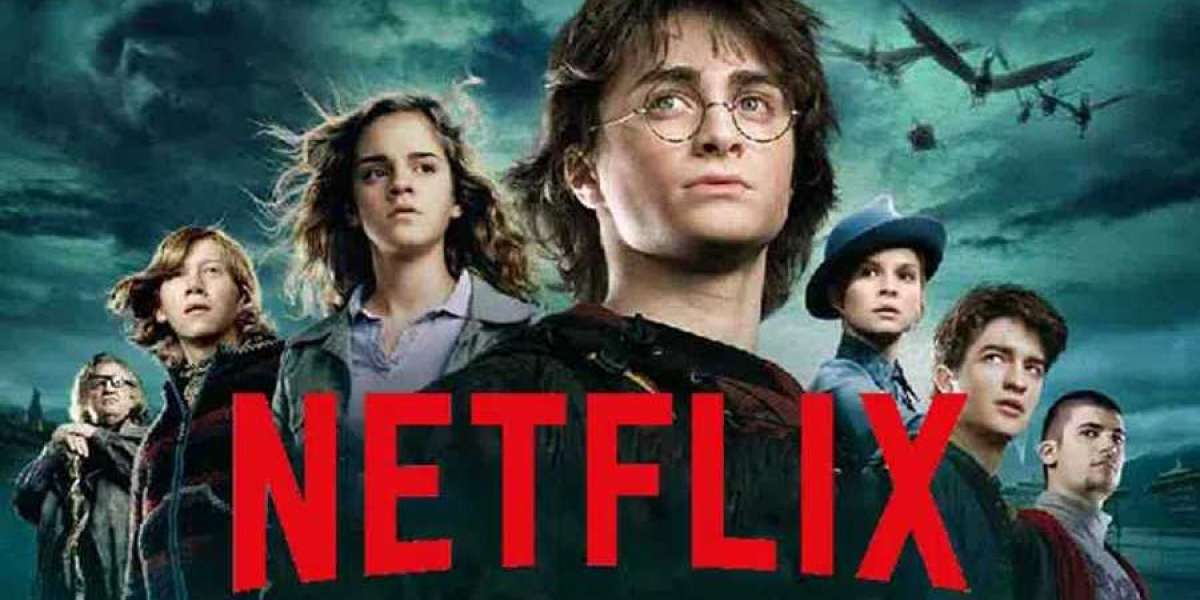Lessons for Digital Entrepreneurs
The challenges faced by entertainment e-trepreneurs during the tumultuous internet phase of the previous year cannot be undone.
However, with the dawn of a new year, there is an opportunity to reflect and strategize anew.
The closure of numerous dot-coms and the subsequent wave of layoffs might have left an impression, yet this situation could lead to positive transformations.
Every emerging industry encounters its share of obstacles, and the former executives of new media are now taking the time to evaluate the valuable lessons learned throughout the past couple of years.
They are contemplating which strategies they would implement if they were allowed to start fresh in the digital landscape.
This reflection is particularly beneficial for the next generation of entrepreneurs preparing to enter the digital arena this year.
Now, let’s delve into the vital lessons that have surfaced from these experiences:
- Seek investors with a deep understanding of Hollywood. A recurring issue for entertainment-focused dot-com companies has been the struggle to find investors who grasp the intricacies of both the entertainment industry and technology.
The development of a thriving content-driven business is a gradual process.
Consider the time it took for networks like Fox, WB, and UPN to establish themselves; this journey requires patience, a trait often lacking in traditional quick-profit investors.
One executive from the now-defunct Digital Entertainment Network highlighted that the frenzied atmosphere of the dot-com era fostered unrealistic expectations regarding timelines.
The monetary commitments made during that time reflected a desire for instant success rather than a willingness to invest for the long haul.
“Investors were looking for a quick win, and they pressured companies to grow at an unsustainable pace,” he explained.
The reality is that Hollywood operates on its own unique timeline, which can be difficult for outsiders to comprehend."Long-term vision is essential for investors aiming to cultivate sustainable businesses," remarks a former executive in the industry. "The fast-paced internet culture clashed with the methodical approach typical of entertainment firms, which requires space for trial and error in product and marketing strategies."
In the relentless race of the dot-com era, companies faced a critical “do or die” scenario, pressured to deliver results in less than two years as demanded by their investors.
Matti Leshem, who once served as the CEO of anteye.com, experienced these pressures directly.
The company, known for its innovative approach of sending RVs across the nation to scout for filmmaking talent, ultimately shut down in December. This decision came after investors like Neveric and Hawk Holdings, part of Qwest's financial division, became dissatisfied with the pace of returns on their investments.
Launched in April, anteye.com had secured deals for production and distribution, partnering with Seventh Art Releasing for theatrical projects and establishing a first-look deal with HBO. They were also preparing to release a documentary from acclaimed director David O. Russell about boxer Benny Hernandez.
"Venture capitalists often miss the mark when it comes to nurturing media ventures," Leshem asserts. "We became overly enthusiastic about quick financial returns, which was a flawed perspective."
He emphasizes the importance of seeking investors with a deep understanding of media business dynamics, as they are more aware of the inherent risks. "For many investors, it’s merely a numbers game. Despite explaining the nuances of Hollywood, they fail to grasp the value of building relationships."
Despite attempts to find a buyer for anteye.com, Leshem notes that potential acquirers ultimately faced their own failures. "Those interested in purchasing anteye ended up going out of business themselves," he explains, as their investors withdrew support.
As one industry leader puts it: "Survival and success require time and determination. Currently, these companies lack the resolve, and the timing to exert that effort is not yet appropriate."
- Patience is key. Many netcasters launched their ventures too soon. Given the inability of potential audiences to access their content, it’s hardly surprising that these businesses failed. For enterprises reliant on web traffic for advertising revenue, a lack of visitors translates directly to financial shortfalls.The frustration surrounding slow internet connections is affecting around 46 million users, making activities like watching webtoons or short films online more irritating than enjoyable.
Despite the potential, the adoption of high-speed internet is still lagging, with only about 3 million users opting for digital subscriber lines or cable modems. Predictions from PricewaterhouseCoopers suggest this figure might hit 17 million by 2004.
For instance, executives at Den have acknowledged that their initial expectations for broadband penetration and the quality of video on web-enabled devices were overly optimistic, which hampered their early efforts.
On the other hand, atomfilms.com has managed to draw a considerable audience, successfully transitioning their business model to showcase short films online. However, even they are questioning whether their timing was right.
The slower internet speeds have led to a preference for animated content, prompting atomfilms to start integrating animation programming with its live-action offerings well before its merger with Shockwave.com. CEO Mika Salmi remarked, "Our strategy was to expand at a more gradual pace, but the rapid movement of others pushed us to accelerate."
A key lesson learned is to create content that resonates with viewers. While internet access has played a role in the success of certain entertainment websites, even those with high-speed connections are not engaging with online content enough to make it popular.
After two years of operation, atomfilms and ifilm.com, viewed as leading competitors to Shockwave.com, still find it challenging to attract a million monthly visitors, according to Media Metrix.
Interestingly, even tech-savvy demographics like college students and teens, who were expected to champion these online platforms, have not fully embraced them as essential viewing. Instead, they gravitate towards communication tools such as AOL's instant messaging service.
A former Den executive pointed out the skepticism surrounding online entertainment, stating, "Without a major hit, doubts about the viability of this sector will persist. If something hasn't gained visibility, it’s often dismissed as nonexistent. Consequently, this leads to assertions that the internet won't play a significant role in entertainment."
Lessons from Online Entertainment
It's important to recognize that while the future of online entertainment is promising, there are significant lessons to be learned from past experiences.
Quality content remains a pivotal factor in attracting an audience. The success of unique offerings like “405: The Movie” and “George Lucas in Love” demonstrates that innovative visuals, engaging storylines, and interactivity can capture viewers' attention and set a standard for online media.
However, educating internet users about the existence of such programming is equally crucial. With hundreds of millions of websites available, effective marketing strategies are essential for drawing in viewers and creating awareness.
Jim Moloshok emphasizes that the shift toward online viewing requires a change in consumer habits. Many people are still unaware that they can access shows on the internet. The challenge lies in informing them about this possibility and gauging their interest in participating.
The notion that it's too early for entertainment to thrive online is misguided. Daily, individuals share short video clips via email, hinting at a readiness for digital content consumption. The challenge is not merely about creating new technologies, but rather about understanding consumer needs and preferences.
History has shown that being the first in the market does not necessarily equate to success. Den, an early major netcaster, serves as a cautionary tale. Despite its position, it failed to resonate with the target Generation Y audience and ultimately folded.
The industry's criticism of Den's extravagant expenditures and legal troubles may reflect broader issues that could affect future online entertainment ventures. This underscores the importance of sustainable business practices and a deep understanding of audience engagement in the digital landscape.Shortly after den ceased operations in Santa Monica, California, and sold off its inventory of computers and Ford vehicles, a wave of closures hit other entertainment-focused dot-coms. Companies such as anteye, fastv, icast, ifuse, kibu, mxgonline, pop, pseudo, scour, snowball, stan lee media, thirsty, and ubo followed suit.
An executive from den reflected, “Didn’t it seem like a circus when we were letting go of so many employees and running out of funds? Initially, people thought it was just a poorly managed dot-com issue. Now, every company in this sector is facing similar challenges. Even those once believed to be untouchable are restructuring and altering their business strategies.”
“Den faced the same challenges as everyone else.”
- Embrace outsourcing and minimize workforce sizes. The shocking part wasn't merely the mass layoffs but the fact that these internet firms had amassed such large teams to begin with. Early dot-com strategies revolved around rapidly hiring large groups of employees to expedite product launches. However, this led to inflated overhead costs that drained initial venture capital.
The trend of layoffs throughout 2000 stemmed from the high costs associated with maintaining large teams of web designers, animators, and producers. Skilled employees come with hefty salaries, benefits, and various other expensive incentives.
For instance, animation network icebox.com laid off 50 employees in November to slash production costs by 50%. CEO Steve Stanford noted that the company would pivot from in-house production of webtoons to utilizing freelancers and external flash animation studios.
This strategic change was anticipated to save up to $15,000 per episode. While producing “queer duck” cost less than $15,000 per webisode with an outside animator, “zombie college” incurred $30,000 per episode when produced entirely in-house.
“We’re aiming to transition into a more established entertainment entity,” Stanford remarked. “Making a profit at $30,000 per episode is quite challenging.”Outsourcing presents its own set of challenges. For instance, Warner Bros. Online could potentially invest around $1 million for DNA Studio to develop the official website for the highly anticipated “Harry Potter and the Sorcerer’s Stone.” However, Warner Bros. Online has managed to save approximately 60% of the costs by utilizing its in-house team of web designers for their film projects.
As one executive noted, “This approach offers significant cost savings and enhances control over the final outcome.”
Conversely, a Denver executive pointed out the financial demands of scaling a company. “Establishing a sizable operation requires substantial investment. The successful companies will be those with the resolve, ambition, and financial resources to carry out their vision.”
He elaborated, “To witness high expenditures, one should examine the investments made by UPN, WB, and Fox during their formative stages. Many underestimate the capital needed to build something substantial.”
Key takeaway: Secure funding. Many dot-com companies became vulnerable when they hesitated to relinquish equity, leading to abandonment by investors in the online entertainment sector.
Despite backing from notable names like Idealab!, 3 Arts Entertainment, and producer Jerry Bruckheimer, z.com had to cut its workforce in half due to financial struggles.
Z's CEO, Joe DiNunzio, shared, “We had a chance to secure additional funding in the spring, but we opted to raise only what we deemed necessary. In our attempt to avoid excessive dilution, we missed an opportunity to bring in more capital.”
An industry insider remarked, “The reality is that every new media initiative is on shaky ground. The only distinction between current failures and those that will fail later is the remaining funds.”
“Investors are cautious after previous losses,” the Denver executive explained. “There’s a prevailing reluctance in the market, with many seeking more promising investment opportunities. Time is of the essence, so it’s crucial to secure as much funding as possible.”
Final note: Launch and iterate. Achieving a flawless website from the outset is unrealistic. Issues like technical errors, broken links, and less-than-ideal content are bound to occur. Dot-coms would benefit from adopting a flexible approach, similar to America Online’s philosophy of continuous improvement.
Pop.com: A Cautionary Tale
pop.com, a comedic initiative led by DreamWorks and Imagine Entertainment, received significant financial backing from billionaire Paul Allen, totaling $50 million.
However, the project fell short as the Glendale, California-based company dedicated an entire year, utilizing its 75 employees to develop and market a website that ultimately never went live.
With prominent figures such as Steven Spielberg, Jeffrey Katzenberg, Ron Howard, and Brian Grazer involved, expectations were sky-high, making it essential for pop to avoid any missteps upon launch.
The site attracted notable talent, including Steve Martin, Drew Barrymore, Matthew McConaughey, Eddie Murphy, and Mike Myers, yet the decision was made in September to shut it down, leading to staff layoffs.
Shortly thereafter, Katzenberg addressed a gathering of lawyers at the 46th annual Entertainment Law Institute, revealing that the team discovered running the website could cost up to $35 million. In contrast, the anticipated revenue from advertising and sponsorships was only projected at $8 million to $10 million annually. They had already spent $7 million on development, but the founders had never even seen the website before deciding to cease operations.
Katzenberg reflected, “It became clear that our concept might have been flawed, our ambitions perhaps excessive, or we simply misjudged the market's readiness.”
- Be prepared for market fluctuations. Even in the new millennium, dot-coms were caught off guard by Wall Street's rapid shifts in investment focus.
Previously, investors understood that the internet space could take years to become profitable, but this perspective quickly evolved, as they began to demand immediate returns.
The first signs of this market shift surfaced in May when Den struggled to secure further funding. After Labor Day, the situation deteriorated rapidly, leading to numerous dot-com failures as investors expressed disinterest in content-driven ventures.
Dinunzio remarked, “Failing to recognize the swift changes in the marketplace was a significant oversight. It unfolded so quickly. We should have been attuned to the warning signs earlier. Our downsizing in October could have been avoided had we acted sooner, allowing for greater adaptability.”A consensus is forming among industry insiders, with one executive noting the market's tendency to overreact in both directions.
The dot-com boom was marked by excessive optimism, while the current downturn reflects an equally misguided pessimism regarding potential growth.
- Frugality is not a negative trait.
Once, many dot-coms underestimated the challenges in securing venture capital, but that perspective has dramatically shifted.
New media companies are shedding the extravagant habits reminiscent of Hollywood's glory days. Their environments may still feature stark concrete and stylish wood finishes, but the ostentatious celebrations at high-end venues like Spago and Skybar are long gone. Now, the focus has shifted to more practical choices—like suggesting that teams shop at Costco, where even the bottled water is just as refreshing.
A key reason for AtomFilms' sustainability, now heading into its third year, is its commitment to frugality. The company encourages employees to share lodging during travels, avoids excessive costs on office space, and prioritizes meaningful events over lavish gatherings.
“Being based in Seattle has been advantageous,” remarks AtomFilms' Salmi. “We’ve always had to approach our operations with a level of pragmatism.”
- Pursue collaborations and partnerships.
The recent merger between Shockwave and AtomFilms is being recognized as an overdue strategic alliance.
By combining forces, these two entities can consolidate management, sales, development, and distribution operations, allowing them to maintain fewer server farms and achieve profitability more rapidly, thus avoiding financial pitfalls.
“Many companies previously overlooked ways to trim their expenses,” notes Moloshok. “Now, they’re exploring alternative methods to save costs while maintaining efficiency.”
This merger is seen as a precursor to anticipated large-scale consolidations within the online entertainment sector, aimed at optimizing resources and leveraging collective strengths. More partnerships translate to increased distribution channels and access to a broader range of content and audience traffic, smoothing the path to profitability.
“By joining our resources, we believe we’re expanding our content offerings and enhancing revenue sources,” stated Rob Burgess, chairman of Macromedia, Shockwave, and the newly formed organization, at the merger announcement. “We’re establishing a more robust business framework, aiming for higher revenues and lower losses.”
Shifts in Digital Entertainment
The landscape of the digital entertainment industry is shifting, with many experts predicting that Shockwave is positioning itself for strategic acquisitions, potentially looking at Icebox to enhance its portfolio. Last summer, Macromedia, the parent company, explored a merger with Time Warner to acquire Netcaster Entertaindom.com, but discussions fell through due to conflicts between the two corporate giants.
According to Moloshok, the current trend among entertainment platforms is that they must operate as independent studios. Unlike the well-structured Hollywood model where entities collaborate under a single umbrella, many dot-coms are still learning to unify their operations.
He asserts, “In today's environment, no single entity can thrive in isolation. Attracting a substantial audience online is incredibly challenging. It’s essential for companies to adapt.”
The events of the internet boom in 2000 remain a puzzle, with various interpretations of what went wrong. The consensus is that the online landscape was so novel that no one had the requisite experience.
A digital executive reflects, “The industry was uncharted territory, and legitimate expertise was scarce. Everyone was figuring things out on the fly, which led to numerous challenges for many startups.”
Despite past setbacks, leaders in the new-media sector are optimistic about the potential of the internet to foster innovative entertainment content for traditional television networks, film studios, and other stakeholders.
Dinunzio emphasizes, “Every emerging company will stumble. We have all faced our share of errors. However, I firmly believe there is a sustainable business opportunity here that can be both creatively rewarding and financially viable. The immediate focus should be on navigating challenges and learning from these experiences.”
Moloshok, whose venture, Windsor Digital Media, is pivoting away from web content creation, concurs, stating that the internet still holds promise for entertainment.
“There are innovators who are investing in and developing sustainable business models that will endure until the digital entertainment sector truly flourishes,” he adds. “These pioneers will ultimately be recognized as visionaries in the industry.”
What are the Harry Potter Movies about and Where to Watch
The Harry Potter movies are about the adventures of young wizard Harry Potter as he navigates his education at Hogwarts School of Witchcraft and Wizardry, battles dark forces, and uncovers his true destiny. For those wondering where to watch harry potter , these films are available on various streaming platforms like HBO Max, Amazon Prime, and Netflix, though availability may vary by region. If the movies are not accessible in your country, using a Netflix VPN can help bypass these geographical restrictions and allow you to enjoy the magical journey from anywhere in the world.
Why Choose SafeShell as Your Netflix VPN?
If people want to access region-restricted content such as Harry Potter movies, they may want to consider the SafeShell VPN . With high-speed servers meticulously optimized for Netflix streaming, SafeShell VPN ensures a smooth and uninterrupted viewing experience, allowing you to enjoy your favorite shows and movies without any interruptions. Its state-of-the-art technology delivers lightning-fast connection speeds for buffer-free playback and high-definition streaming, enhancing your viewing experience significantly. Beyond speed, SafeShell VPN allows you to connect up to five devices simultaneously, offering compatibility with a wide range of operating systems including Windows, macOS, iOS, Android, Apple TV, Android TV, and Apple Vision Pro.
The exclusive App Mode feature of SafeShell VPN provides an opportunity to unlock and enjoy content from multiple regions at the same time, allowing you to explore a vast array of entertainment options without limitations. This VPN delivers lightning-fast speeds, eliminating buffering and throttling, and providing unparalleled internet performance for streaming, downloading, and browsing. Additionally, SafeShell VPN prioritizes your online privacy with its proprietary "ShellGuard" VPN protocol, offering top-level security for your private browsing sessions. With advanced encryption and strong security features, you can navigate the web with peace of mind, knowing your data is secure from prying eyes.
A Step-by-Step Guide to Watch Harry Potter with SafeShell VPN
To watch Harry Potter movies using SafeShell Netflix VPN , start by subscribing to the service. Visit the SafeShell VPN website and select a subscription plan that fits both your needs and budget, then click the "Subscribe Now" button to proceed. Once subscribed, download and install the SafeShell VPN app on your device, choosing the correct version compatible with your operating system, whether it's Windows, macOS, iOS, or Android. After installation, launch the app and log in to your SafeShell account. Make sure to choose the APP mode to optimize your experience while streaming Netflix.
Next, select a VPN server from the list of available options. Choose a server located in the region where the Netflix content you wish to access is available, such as the US, UK, or Canada. Click "Connect" to establish a secure connection with your chosen server. Once connected, open the Netflix app or visit the Netflix website and log in with your Netflix credentials. You're now all set to enjoy the magical world of Harry Potter in the region of your choice, thanks to SafeShell Netflix VPN.







